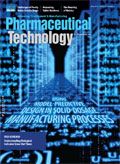Small-Molecule Drug Development: Recent Study Suggests Limited Binding Sites
A recent study of computer-created and natural proteins suggests the number of sites where small-molecule drugs can bind to proteins is limited, thereby narrowing how to mitigate side effects through drug design.
A new study of both computer-created and natural proteins suggests that the number of unique pockets, sites where small-molecule pharmaceutical compounds can bind to proteins, is small, thereby, offering an explanation of the difficulty in mitigating side effects in drug design.
Studying a set of artificial proteins and comparing them to natural proteins, researchers at the Georgia Institute of Technology (Georgia Tech) concluded that there may be no more than about 500 unique protein pocket configurations that serve as binding sites for small-molecule ligands, according to a May 20, 2013 university press release. "Our study provides a rationalization for why a lot of drugs have significant side effects because that is intrinsic to the process," said Jeffrey Skolnick, a professor in the School of Biology at Georgia Tech and co-author of the recent study (1). "There are only a relatively small number of different ligand-binding pockets. The likelihood of having geometry in an amino-acid composition that will bind the same ligand turns out to be much higher than anyone would have anticipated. This means that the idea that a small molecule could have just one protein target can't be supported."
Binding pockets on proteins are formed by the underlying secondary structure of the amino acids, which is directed by hydrogen bonding in the chemistry, which allows formation of similar pockets on many different proteins even those that are not directly related to one another. "You could have the same or very similar pockets on the same protein, the same pockets on similar proteins, and the same pockets on completely dissimilar proteins that have no evolutionary relationship," said Skolnick in the release. "In proteins that are related evolutionarily or that have similar structures, you could have very dissimilar pockets. This helps explain why we see unintended effects of drug and opens up a new paradigm for how one has to think about discovering drugs."
The implications for medicinal chemistry could be significant. To counter the impact of unintended effects, drug developers will need to know more about the available pockets to avoid affecting binding locations that are also located on proteins crucial to life processes. If the unintended binding takes place on less crucial proteins, the side effects may be less severe. In addition, drug development could also move to a higher level by examining the switches that modulate the activity of proteins beyond binding sites. "The strategy for minimizing side effects and maximizing positive effects may have to operate at a higher level," Skolnick said. "You are never going to be able to design unintended binding effects away. But you can minimize the undesirable effects to some extent."
In their study, the researchers used computer simulations to produce a series of artificial proteins that were folded, but not optimized for function. Using an algorithm that compared pairs of pockets and assessed the statistical significance of their structural overlap, they analyzed the similarity between the binding pockets in the artificial proteins and the pockets on a series of native protein, according to the release. The artificial pockets all had corresponding pockets on the natural proteins, suggesting that the simple physics of folding has been a major factor in development of the pockets. "This is the first time that it has been shown that side effects of drugs are an inherent, fundamental property of proteins rather than a property that can be controlled for in the design," Skolnick added. "The physics involved is more important than had been generally appreciated."
Reference
1. J. Skolnick and M. Gao, Proc. Natl. Acad. Sci. USA, online, DOI: 10.1073/pnas.1300011110, May 20, 2013.

Drug Solutions Podcast: A Closer Look at mRNA in Oncology and Vaccines
April 30th 2024In this episode fo the Drug Solutions Podcast, etherna’s vice-president of Technology and Innovation, Stefaan De Koker, discusses the merits and challenges of using mRNA as the foundation for therapeutics in oncology as well as for vaccines.